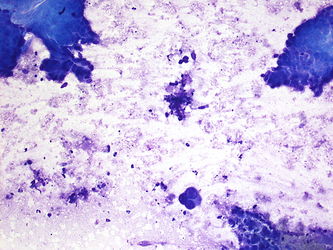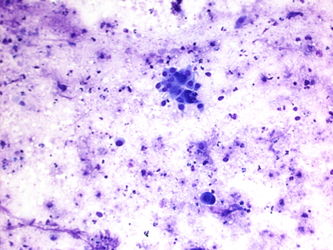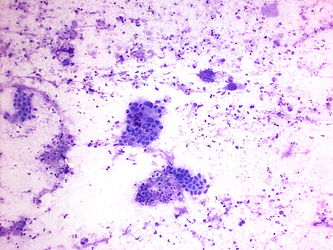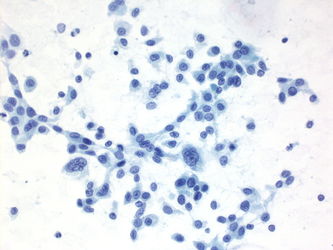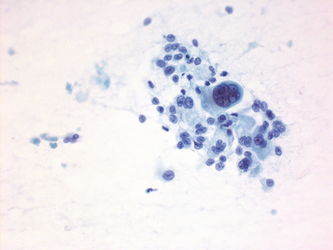Difference between revisions of "Cytologically Yours: Unknowns: 201401: Case 1"
| Line 22: | Line 22: | ||
** Can obstruct the biliary or pancreatic ducts which can cause a double duct sign on imaging and can also cause painless jaundice | ** Can obstruct the biliary or pancreatic ducts which can cause a double duct sign on imaging and can also cause painless jaundice | ||
</spoiler> | </spoiler> | ||
| − | |||
* <spoiler text="What are some of the cytologic features that lead you to the diagnosis?"> | * <spoiler text="What are some of the cytologic features that lead you to the diagnosis?"> | ||
* Cellular specimen | * Cellular specimen | ||
| Line 33: | Line 32: | ||
* Drunken honeycomb | * Drunken honeycomb | ||
</spoiler> | </spoiler> | ||
| − | |||
* <spoiler text="Differential diagnosis?"> | * <spoiler text="Differential diagnosis?"> | ||
* Chronic pancreatitis | * Chronic pancreatitis | ||
Revision as of 18:27, 16 January 2014
The normal fibrinogen level is 184 to 412 mg/dL.
Jaundice (or icterus) is a state of hyperbilirubinemia (increased bilirubin in the blood) in which bile pigment is deposited in the skin, mucous membranes, and scleras. This deposition of bile pigment results in a yellow appearance.
Chronic inflammation of the pancreas (pancreatitis) is most often caused by alcoholism or biliary tract calculi.
